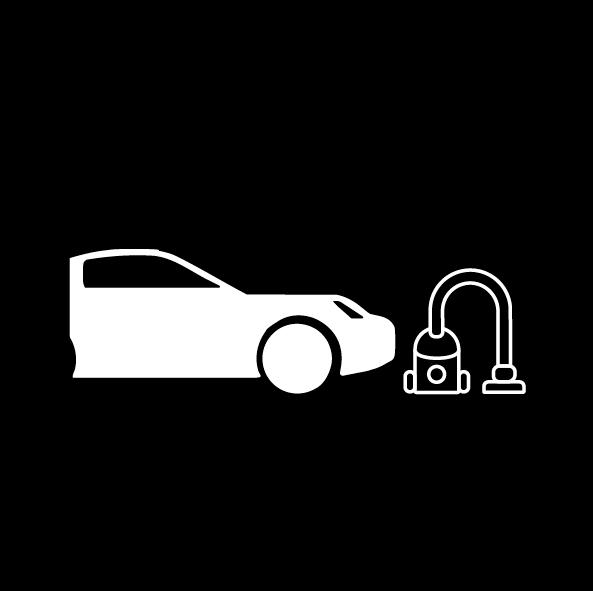NOCO's Ultimate Winter Vehicle Storage Guide.
Tips for Winter Vehicle Storage.
Winter is coming, and the low temperatures and elements can be rough on your treasured vehicle. Take the proper measures to make sure your beloved vehicle survives the unrelenting conditions winter brings. When preparing your vehicle for winter it is important to choose a location where your vehicle will not be affected by the elements. Choosing an indoor dry space, with concrete floors is the prime option. Parking the vehicle in your own personal garage or renting a storage unit to keep the vehicle is your best choice to keep your vehicle away from the elements. Try to avoid parking on bare dirt, because dirt accumulates moisture which can damage your vehicle’s parts and paint once the winter is over.
Preparing your vehicle for winter storage.
Shown here is a typical three battery system. You can see that the first bank of the NOCO GEN connects to two 6V deep-cycle batteries hooked up in series. The 12-volt battery is charged through its own bank. A great example to explain the use of this scenario would be on a watercraft. The 12-volt battery is used to start the boat’s engine, and power its accessories such as lights and radar.






Wash Vehicle.
Clean the exterior of your vehicle well, remove all the dirt from the vehicle making sure to also spend some extra time cleaning the wheel wells and undercarriage because dirt and dust accumulates there the most while driving. According to Popular Mechanics, “Dirt holds moisture, and the combination of moisture and air causes iron and steel to rust.”






Wax & Polish Paint.
Waxing and polishing help your vehicle’s paint and clear coat by providing additional layers of protection from dirt. Polishing your vehicle also helps make your classic vehicle’s paint shine again.






Vacuum Interior.
Vacuum your seats and carpet using the vacuum's extendable attachments that help you to reach tight places. Vacuuming your vehicle helps to keep animals out by removing any crumbs that could sustain them. Plus, vacuuming your interior also helps prevent any odors from building up while the vehicle is stored.






Lubricate Hinges.
Lubricate all hinges and latches on the vehicle's doors and hood. Lubricating the hinges and latches helps to keep them safe from any moisture.






Oil Change.
Check your dipstick first and your service records to see when you last had your oil changed. Change your oil and replace the oil filter before putting the vehicle in to long term storage. If your oil levels are low top off the fluids before you park the vehicle for the winter. Changing your oil before storing your vehicle ensures your vehicle is ready to drive once you take it out of storage.






FUEL STABILIZER.
Using a fuel stabilizer helps to keep your gas fresh and prevents corrosion for up to twelve months, plus it helps your vehicle start easily after storing it for the winter. Car and Drive Magazine recommends using Sta-Bil and Pro-G fuel conditioners because they “keep gas fresh longer”(TQ) but they also mention that adding “these products aren’t critical for three- or four- month storage periods, but it doesn’t hurt to add them” (TQ). Drive the vehicle for 30 to 40 minutes after adding the fuel stabilizer to make sure it coats all the parts. This helps to prevent any unwanted build up while the vehicle is parked.
Preparing the storage area.
Plastic Sheet Floor Cover
Whether you choose to store your vehicle indoors or outdoors it is recommended to use a plastic barrier underneath the vehicle to prevent moisture from residing on your vehicle. When you finally take your vehicle out from storage the plastic serves as a good indicator if any leaks have occurred while you were away. If you are planning on parking your vehicle outside, laying out plastic with sheets of plywood to drive on will help to keep some moisture away from the vehicle's undercarriage while stored.
Parking
In order to maintain your tires while storing your vehicle you should fill the tires to the max pressure level. The max pressure level is written on the side of the tires. Your tires will be okay for up to one month in storage if filled to the max tire pressure. When parking your vehicle you should not use the emergency break. Instead, use wedge blocks under the tires to prevent rolling. If stored longer than 30 days, it is recommended to use four car jack stands to tires do not develop flat spots.
Pest prevention: Exterior
Protect your vehicle from critters trying to escape the winter cold by placing steel wool balls in the exhaust pipes or cover your exhaust pipe with aluminum foil.
Pest prevention: Interior
Use dryer sheets instead of mothballs. The scent from mothballs are known to seep into porous materials like leather, plastics and carpet. Fabric sheets leave vehicle smelling fresh when you get back into your car once spring arrives.
Battery Maintenance
Use a NOCO Multi-Purpose Battery Charger and Maintainer if the battery is stored for longer than one month. You can remove the battery and charge it outside of the car some place dry and warm. Or you can permanently mount a NOCO GBC007 Boost Eyelet Cable to your vehicle's battery to allow for quick charging access.
Vehicle Covers
Vehicle covers should provide sufficient ventilation and keep moisture out. We recommend having an extra set of hands to help you put on the cover to keep it from touching the ground to avoid getting any dust on the vehicle before storing it.
Conclusion
Exercise your vehicle every 60 days while you have the vehicle stored. Run the engine and air conditioner while driving at least 30 miles. Running your vehicle helps circulate fluids through the engine and keep the tires in good working condition. When starting your vehicle up, Popular Mechanics recommends using “100-grit sandpaper on a rubber block” (PW) to sand any built up rust off the brake rotors. Our final tip is to leave yourself a note retracing the steps you took, that way you can get your vehicle up and running after the winter comes to an end.
Cookies On This Site
Our website uses cookies, pixels, and similar technology (“Cookies”) to make the website work and to improve your online experience. Cookies that are essential for the functioning of our website are always active and cannot be turned off. With your consent, however, we may also use non-essential Cookies to improve user experience, personalize advertisements, and analyze website traffic. By clicking “Accept All,” you consent to our use of all Cookies, including these non-essential Cookies. You may block non-essential Cookies by clicking “Reject,” or change your cookie settings by clicking “Preferences.”
By using our website, you acknowledge this notice, and by clicking “Accept All,” “Reject,” or “Preferences,” you agree to our Website Terms of Use. See our Cookie Policy and Privacy Policy to learn more.